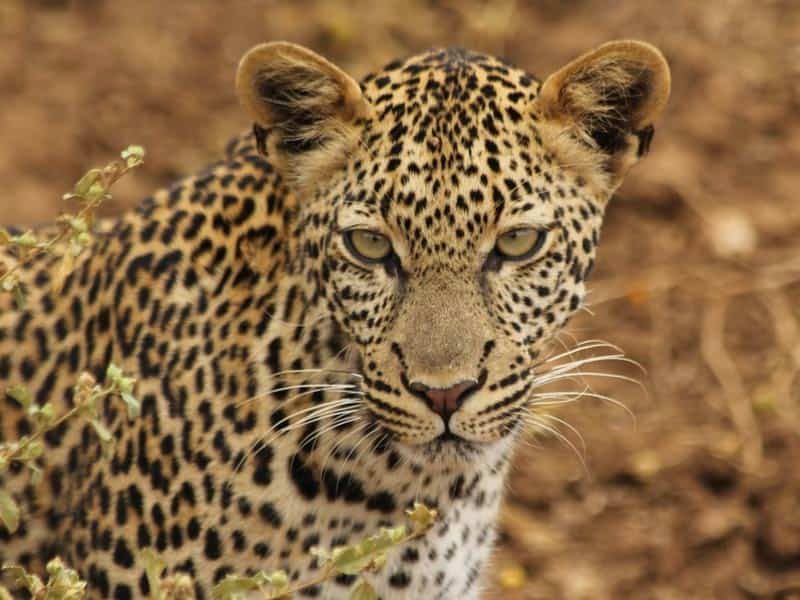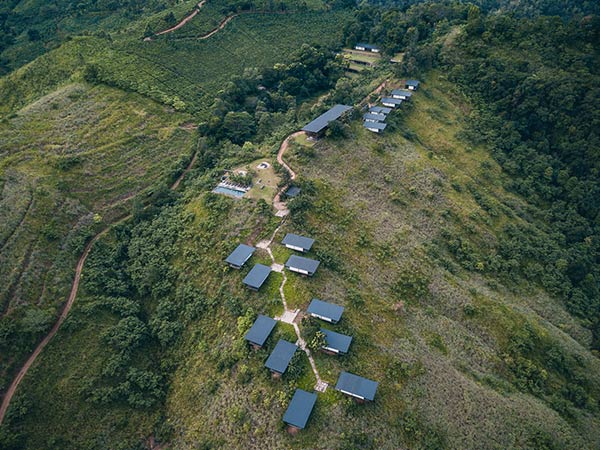Wilpattu provides you with the best wildlife safari in Sri Lanka. Situated 182 km from the country’s capital Colombo, you can reach Willpattu via the A3 highway that runs from Colombo to Puttalam and thereafter proceed on the A2 highway connecting Puttalam and Anuradhapura for another 42km at which point a signboard on the left side will announce the entrance of the park from where the travellers have to make final 8km ride to the park office at Hunuwilgama. The path is surrounded by beautiful lowland forests followed by open wildlife areas. The whole journey, from Colombo to the reserve entrance, will take about 5 hours via the highways.
Unlike other parks and reserves in Sri Lanka, Wilpattu is unique for the existence of ‘villus’– the shallow naturally filled water basins which are the main topographical feature of the area. The presence of these water-filled depressions goes hand in hand with the region’s weather patterns. The park experiences heavy downpours during the period of the north-eastern monsoon which lasts from September to December. These monsoons turn the forests into a luscious, dense green paradise that attracts large populations of colourful butterflies. While the main drought period prevails from May to early September, the area also experiences an inter monsoonal period during the months of March and April. Therefore, the ideal time for one to visit Wilpattu is during May and October when the onset of prevailing drought heightens the grasslands and shrubbery providing amazing opportunities to catch sightings of wildlife during the safari.
Wilpattu is enclosed by two rivers, Modara Gamaru and Kala Oya, on the north and south borders, respectively. Amidst the open scrublands and thick lowland forestry, Wilpattu consists of roughly 100 naturally formed waterholes which draw plenty of wildlife out of their shelter. Based on the changing topographical features and the presence of waterholes that gets flooded and dry depending on the seasons, Wilpattu offers sightings of varying species year around. This alone makes the reserve the best place to explore the wildlife in Sri Lanka.
Not only famous for its wildlife Wilpattu is also known for its archaeological and historic importance too. The history of the reserve land runs as far as back to the arrival of Prince Vijaya from India in the 6th century BC. On the eastern side of the reserve, the remains of ancient civilizations can be seen.
Home to Sri Lanka’s most desired wildlife, Sri Lankan leopards, Asian elephants, and sloth bears, Wilpattu is highly coveted by wildlife enthusiasts around the globe. A safari in Wilpattu lets you sight all three of the “Sri Lanka’s Big Three- leopards, sloth bears, elephants”. Sloth bears ‘Melursus ursinus’ can easily be spotted during May and July as the fruits and flowers are in full bloom during this season and sloth bears love to feed on the ripe fruits of palu trees. Now considered a threatened species due to their steadily declining numbers, it is estimated there are only one thousand sloth bears left on the island. Therefore, Wilpattu provides you with a unique opportunity to hold sight of this omnivorous mammal.
The most coveted wildlife to see in the country is Sri Lankan leopards. Sought after by wildlife enthusiasts both internationally and locally, these leopards are a subspecies of Indian leopards. A game drive into the forests near the waterholes will reward you with sightings of this magnificent predator. Even though the leopard population here is less dense than that of Yala national park, Wilpattu reserve is highly popular among wildlife photographers as the waterholes and the wildlife depending on it offer them excellent photographic opportunities.
Asian elephants, Elephas maximus, are the established residents of all Sri Lankan national parks and reserves. The subspecies Elephas maximus is endemic to Sri Lanka. These gentle giants can be seen in herds going about their lives in the lowland forests. You can catch sight of them near the waterholes. It is a delight to watch baby elephants frolicking about the grasslands and villus with their herd members. Herds of elephants can be seen between the months of July to September when the climate is drier. The water tank in Hunuwilagama is known to receive a visit from a herd of 60 members during this period too. However, lone bull elephants can be seen around the year. These magnificent creatures roam around the dry zone freely in large numbers and you can see them in a game drive year around.
Apart from the Big Three, Wilpattu is home to several rare and endemic mammals of Sri Lanka such as the golden palm civet, northern mouse deer and purple-faced leaf monkey. These are some of the popular endemic mammals that can be seen in Wilpattu. It is worthy to note that so far roughly 15 endemic species and subspecies of mammals have been spotted in Wilpattu. The reserve is a haven for local birds as well as winter migrants. Endemic birds such as jungle fowl (which also happens to be our national bird), painted storks, owls and eagles can be seen in generous numbers.
A swarm of butterflies can be seen in the months of May and July as it is the period where you can see trees with fruits and flowers in their full bloom. Butterflies like Common Mormons and Crimson rose are a few of the many species one can spot in the park. When it comes to the topic of reptiles, Mugger crocodiles top the list followed by soft-shelled turtles, cobra, monitor lizards and other species. From mammals to birds to reptiles, Wilpattu is the ideal ecosystem that houses a sheer number of species.
Dense forests and tall shrubs cover most of the reserve land providing excellent shelter while the numerous waterholes function as the common ground for all wildlife, providing the traveller with excellent sightings of feeding, frolicking, and going about their lives.


